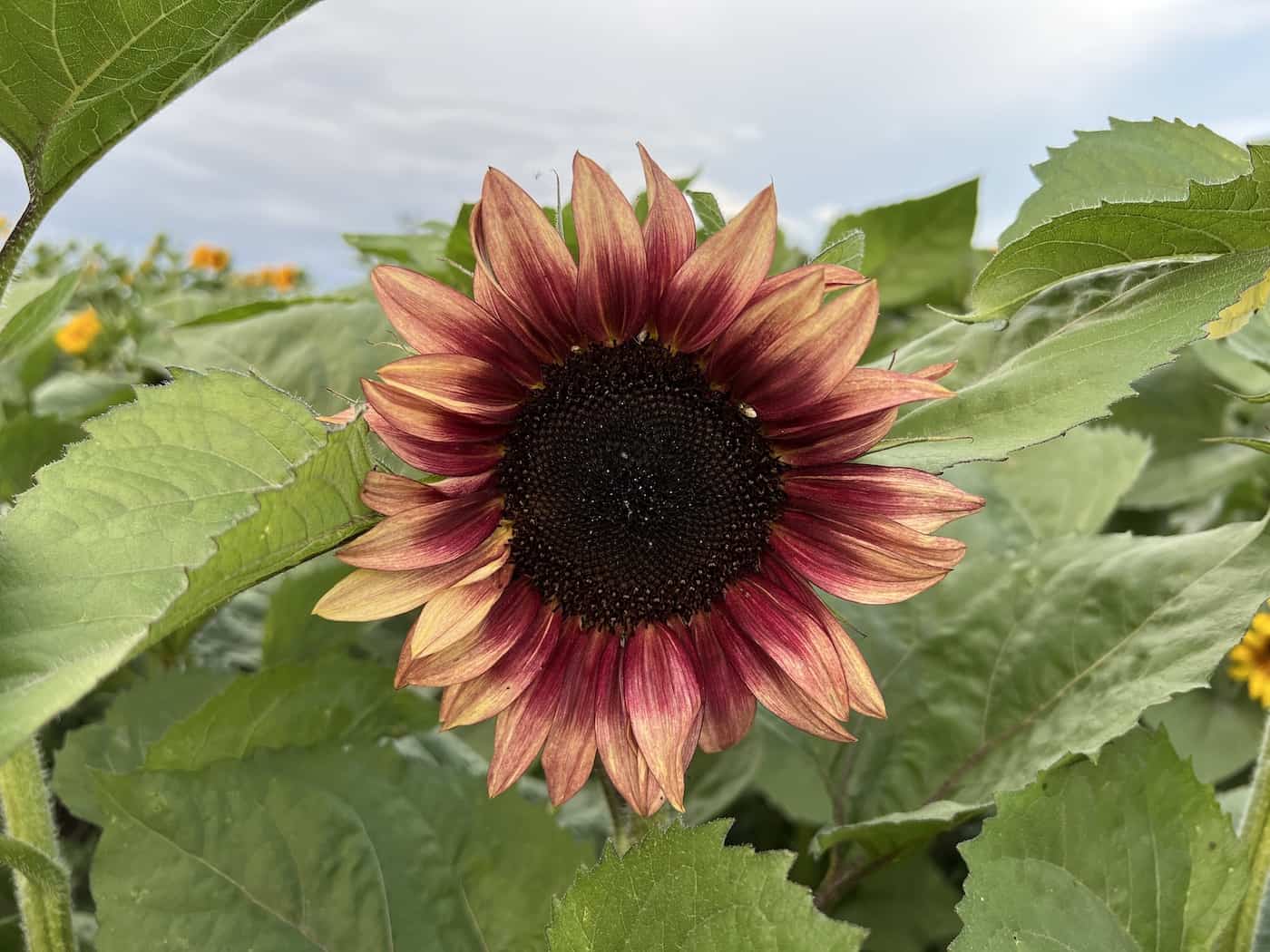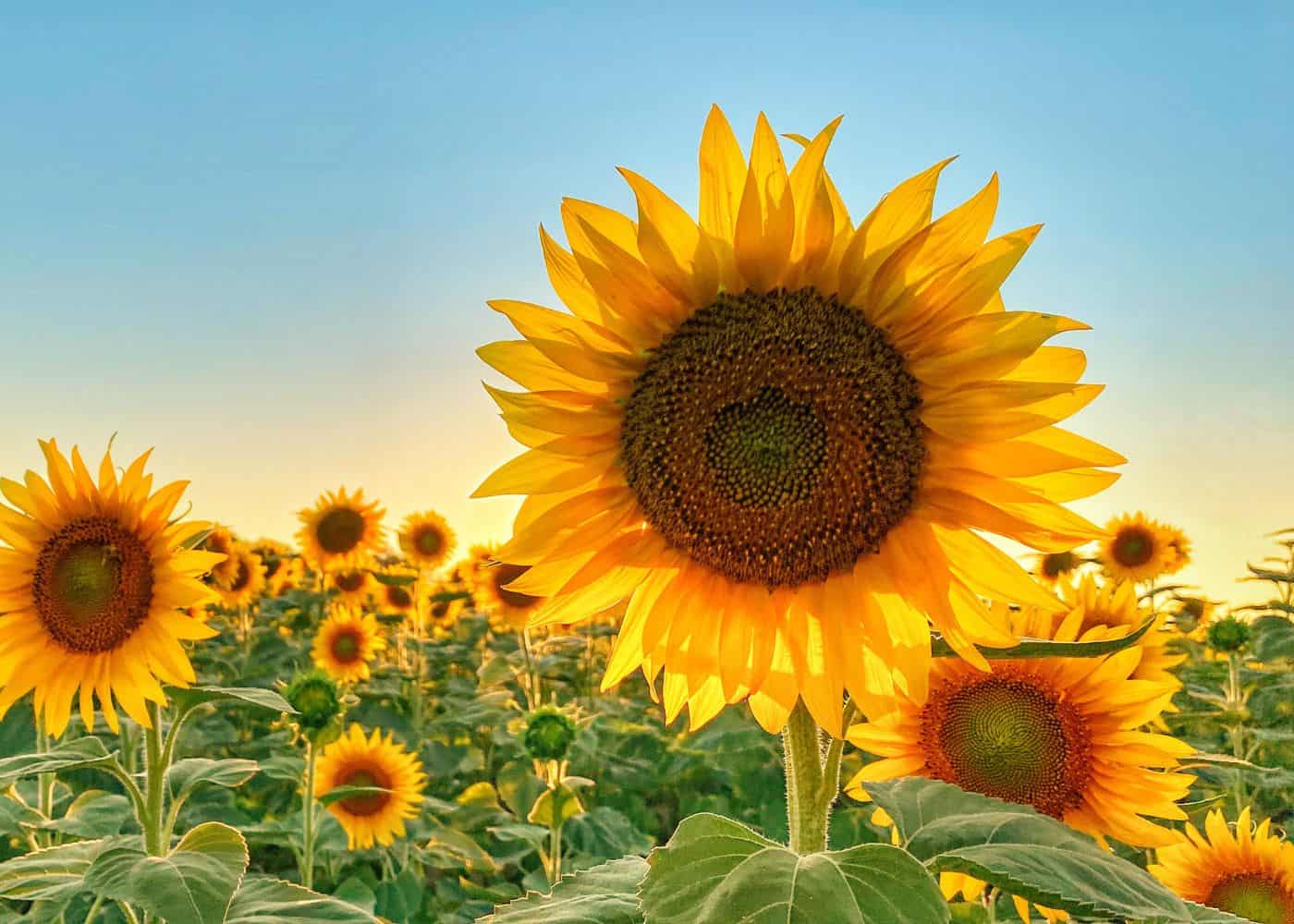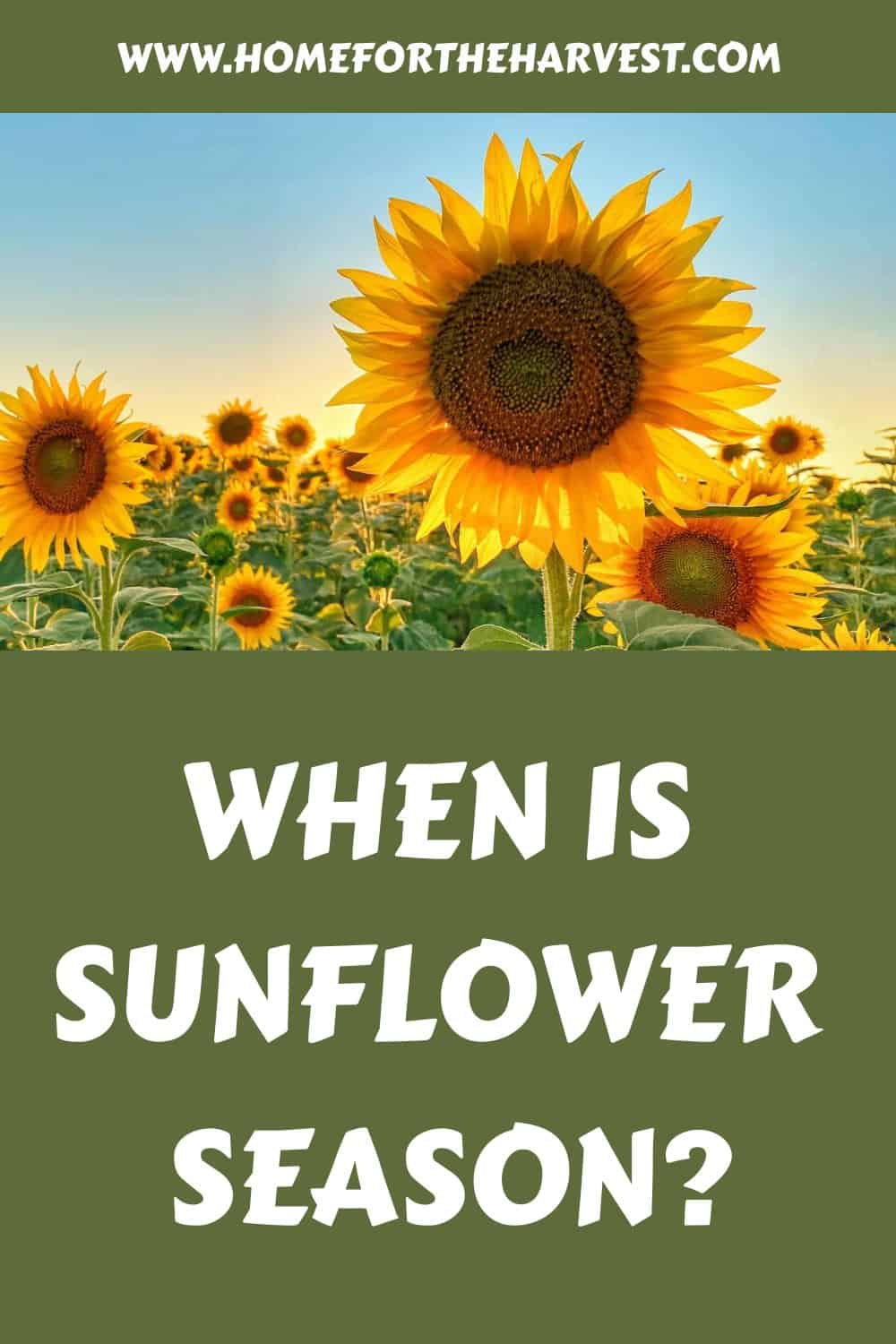Sunflower season falls in August-September in most climates. The peak of the flowers blooming usually occurs in late August to early September. Sunflower blooming season generally aligns with back-to-school and with annual fall fairs and events to mark the start of the harvest season. Sunflower seeds are typically harvested later in September.
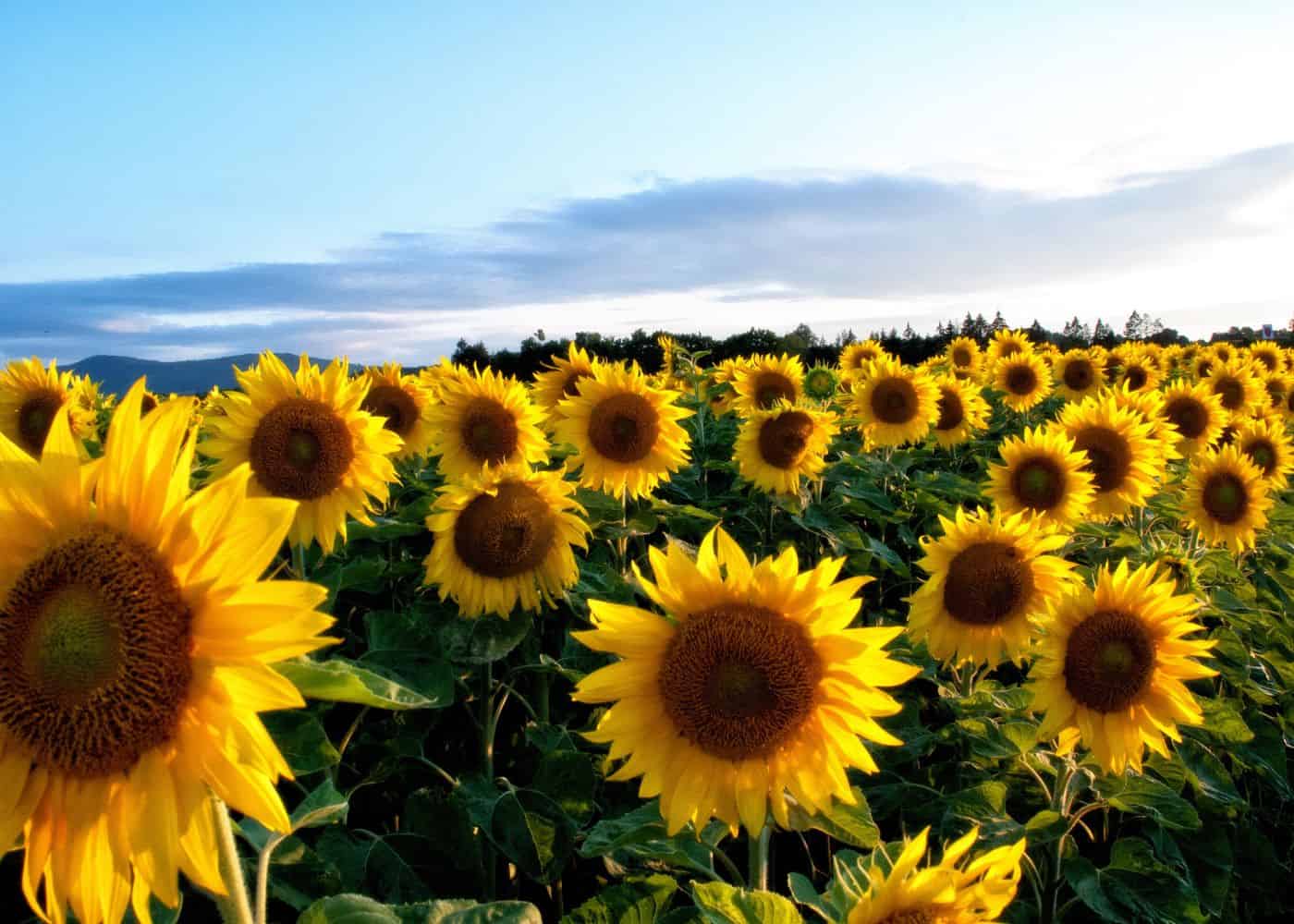
When is sunflower season?
Sunflower season starts each year in late summer and stretches into early fall. Sunflowers typically start blooming in August, with longer-season varieties and later-planted crops blooming into September. Peak sunflower season is late August to early September in many temperate climates.
Sunflower season typically depends on the location and climate where the sunflowers are being grown. In areas with warm climates, sunflowers may start blooming as early as May and continue blooming until September or October, as long as the variety planted is a branching variety or has been planted all spring successively. In cooler climates, sunflowers may not start blooming until July or August and may only bloom for a few weeks before being killed by the first hard frost in the fall.
The peak of the sunflower season will depend on when your crop was planted when the right amount of rainfall occurred, and when the temperatures become favorable for flowering. Sunflowers are very sensitive to temperature changes and tend to flower when nights start to get cooler as fall approaches. The flowers want to get their seeds fully grown before frost kills the plants.
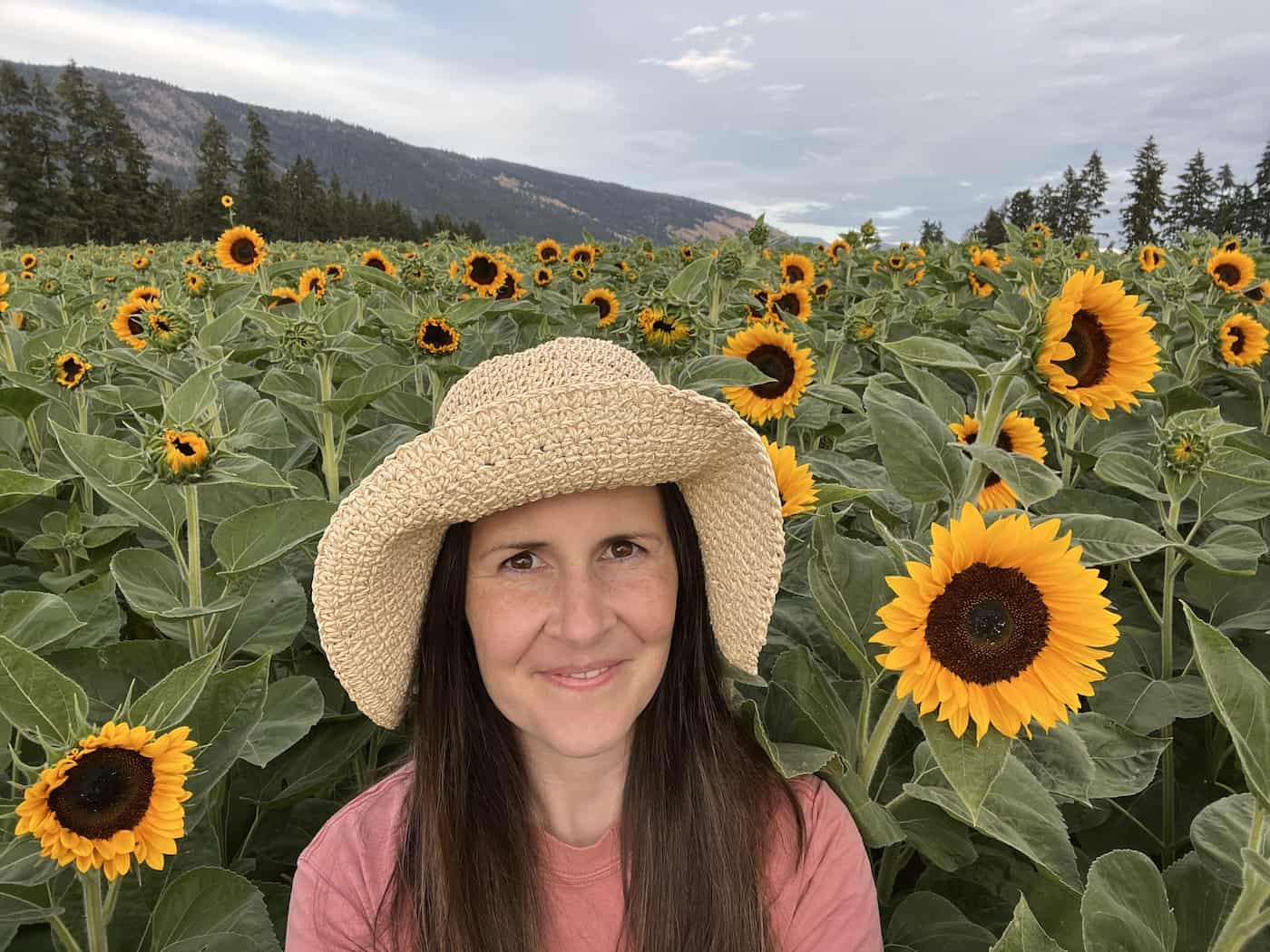
Sunflower festivals and farmer florists
Flower farmers and farmers who host sunflower festivals typically do several successive plantings across different fields to extend the period within which the sunflowers are blooming. They may plant a batch of seeds every week in May and early June, so the fields will burst with flowers in late August and early September.
Flower farmers and sunflower festival hosts tend to plant florist sunflower varieties. These cultivars have a single stem that grows to 5′-6′ tall. Each plant produces one flower head. One batch of these sunflower seeds planted simultaneously will have a blooming season that lasts about 2-3 weeks as a group.
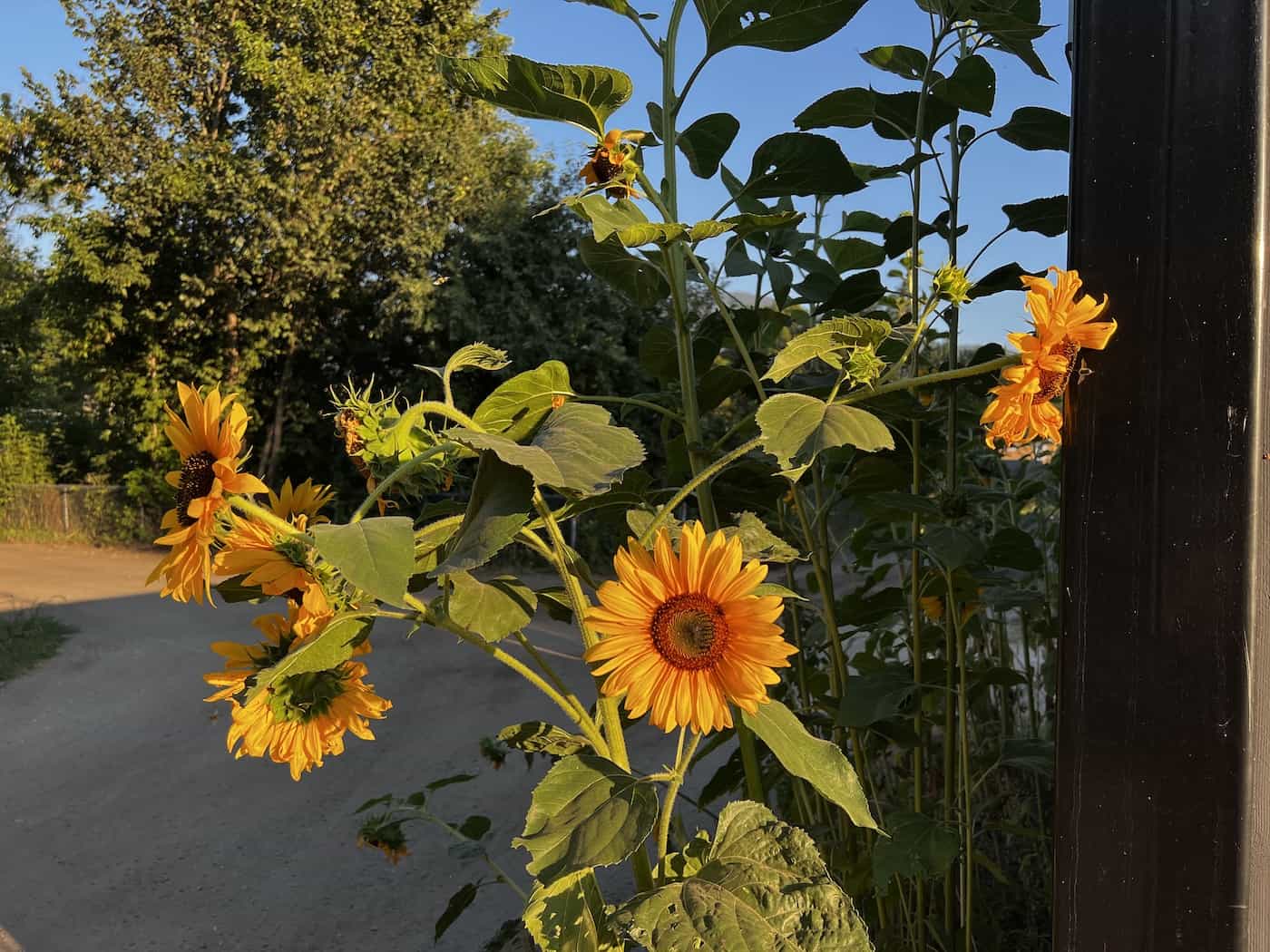
Sunflowers grown by home gardeners
Home gardeners do grow florist sunflowers as ornamentals but may also grow branching sunflower varieties, tall-growing varieties, and varieties that you can harvest the seeds from for snacking.
Branching sunflower varieties often grow 15-25 flower heads on a single plant. The flowers usually start blooming in July and can last until frost.
Taller sunflower varieties can grow up to 15′ tall. They usually have one head that blooms for a few weeks before it droops, but tall branching varieties that keep putting on new flowers into the autumn are also available.
If you’re growing sunflowers for snacking, your plants should produce seeds when the flower heads start drooping and the back of the flower head turns yellow-brown. This usually happens in late August through early October. When the flower heads curl back on themselves, and the plant turns yellow, it’s time to cut off the heads and set them out to dry in a sheltered location away from critters and fall rains.
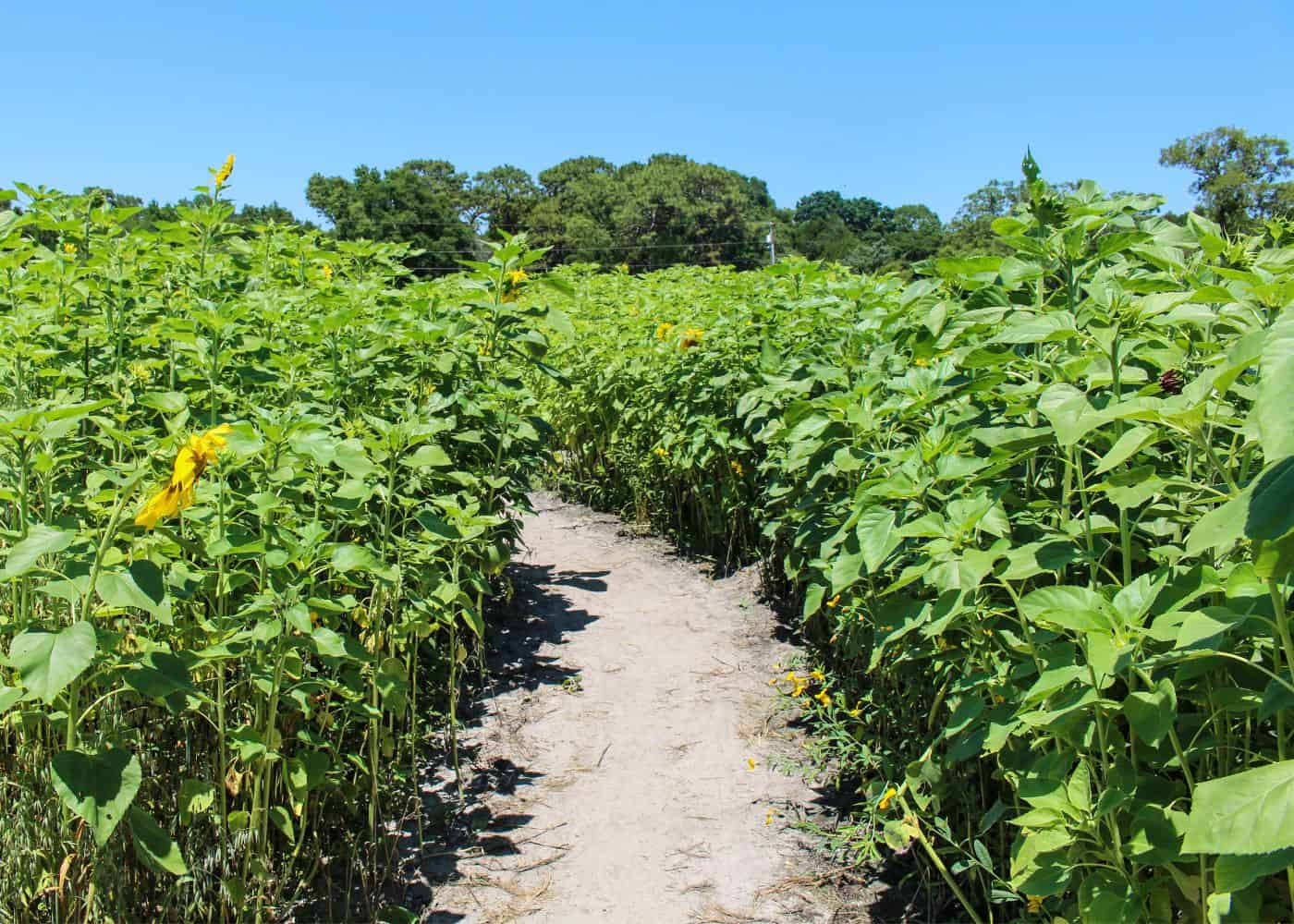
Factors affecting the timing of sunflower blooming
The timing of the sunflower season typically depends on the location and climate where the sunflowers are being grown. In general, sunflowers are typically planted in the spring and will start to bloom in late summer.
In areas with warm climates, sunflowers can be planted in very early spring and may start blooming as early as June or July. In cooler climates, sunflowers are typically planted in May or early June and won’t be ready to flower until August or September.
The specific sunflower season can also vary depending on the variety of sunflower being grown. Some varieties of sunflowers will bloom earlier or later in the season than others.
It is a good idea to research the specific variety of sunflower you are growing to better understand when it will be in bloom. The seed packet typically lists the “days-to-bloom” or “days-to-maturity” of the variety so that you can calculate when to expect your plants to bloom. Quick-growing varieties usually grow in 50-60 days, while the taller plants can take 70-95 days to bloom.
The length of time that sunflowers bloom for can vary depending on the variety of sunflower and the climate in which they are grown. Some sunflowers may only bloom for a few weeks, while others may bloom for several months.
In general, sunflower cultivars that form a single head will bloom for 2-3 weeks. This includes many giant varieties and florist sunflowers like the ProCut line. Branching varieties will start to bloom in the summer months and will continue blooming until frost. These types produce about 20 heads per plant over a period of about 2 months.
Sunflower season in cold climates
In colder climates, sunflower season may start later and end sooner due to the shorter growing season. This is because there may have been a later start in terms of planting (or replanting if the first planting was killed by a hard freeze). It also may get too cold in the fall for the seeds to have time to mature on the plant. Growers with particularly short seasons should choose quick-growing varieties due to their shorter growing window.
Sunflower season in warm climates
Plants may bloom a bit earlier in the year in warmer climates when temperatures are more favorable for flower production. It’s also important in warmer climates to choose a variety that is adapted to your climate and when the sunflower season usually occurs.
In climates where it doesn’t freeze, sunflowers can be grown year-round! Farmers in areas like Africa and Australia can plant sunflower seeds in the fall for wintertime harvest.
Sunflower varieties by bloom time
Here are the number of days between planting the seed outdoors in the soil and the expected start date of the flower blooming:
- Big Smile: 50-60 days
- ProCut Orange: 50-60 days
- Lemon Queen
- Autumn Beauty
- Mammoth
